Introduction to Construction Safety
The construction industry is inherently fraught with potential hazards. From working at heights to operating heavy machinery, construction workers face numerous risks daily. Statistics reveal a sobering reality: construction is often listed among the industries with the highest injury rates. This fact underscores the critical importance of stringent safety standards in safeguarding the well-being of workers.
Key Safety Standards in Construction
Adherence to established safety standards and regulations forms the core of construction safety in Australia. The Australian government, through agencies like Safe Work Australia and various state authorities, sets and enforces stringent safety standards to ensure secure construction environments. Key standards prevalent in the Australian construction sector include:
- Personal Protective Equipment (PPE): Mandates the use of helmets, safety glasses, gloves, and other protective gear to safeguard workers against potential hazards.
- Fall Protection: Implements rigorous measures to prevent falls, a significant cause of injuries and fatalities in construction. This includes guidelines for safe working at heights and the use of fall arrest systems.
- Scaffold Safety: Provides comprehensive guidelines for the safe erection, alteration, and dismantling of scaffolds, ensuring they are structurally sound and reliable for worker use.
These standards are instrumental in minimizing risks and upholding safety across construction sites in Australia.
Understanding the Role of Safety Training
Effective safety training is indispensable in construction. Regular and comprehensive training programs not only educate workers on current standards but also keep them abreast of emerging safety practices. These programs often include:
- General Safety Training: Covering a broad range of common hazards and preventive measures.
- Specialized Certifications: For operating specific machinery or performing high-risk tasks.
Implementing a Safety-First Culture
Creating a culture that prioritizes safety above all else is essential. This involves:
- Leadership Commitment: Leaders should demonstrate a firm commitment to safety, setting a precedent for the entire team.
- Continuous Communication: Regular safety meetings and open discussions about safety concerns are vital.
Risk Assessment and Management
Conducting thorough risk assessments is a proactive step in identifying potential hazards. Key elements in this process include:
- Site Inspections: Regular walkthroughs to identify and address hazards.
- Hazard Mitigation Strategies: Implementing measures to minimize identified risks, such as providing adequate fall protection or ensuring electrical safety.
The Impact of Technology on Construction Safety
The integration of technology in construction has brought a significant improvement in safety standards. Advanced tools and equipment are now playing a pivotal role in enhancing safety:
- Wearable Safety Devices: Tools like smart helmets and vests can monitor vital signs and detect fatigue or other health concerns in workers.
- Drones: Drones are increasingly used for site surveys and inspections, reducing the need for workers to access potentially dangerous areas.
- Safety Software: Software solutions help in risk management, safety training, and incident reporting, streamlining safety protocols and ensuring compliance.
Emergency Response Planning
A robust emergency response plan is crucial for handling accidents and crises effectively. Essential components of such a plan include:
- Clear Protocols: Well-defined steps for different types of emergencies, from medical injuries to structural failures.
- Training and Drills: Regular emergency response drills to ensure that all team members are prepared for actual emergencies.
- Communication Plan: A system for quick and efficient communication during emergencies, including contact information for all relevant parties.
Regular Audits and Inspections
Conducting regular safety audits and inspections is key to maintaining high safety standards on construction sites. These audits involve:
- Routine Checks: Regularly scheduled inspections to ensure that all safety measures are in place and equipment is functioning correctly.
- Compliance Verification: Making sure that all safety practices align with current regulations and standards.
- Feedback and Improvement: Using the findings from audits to improve safety practices and address any identified issues.






